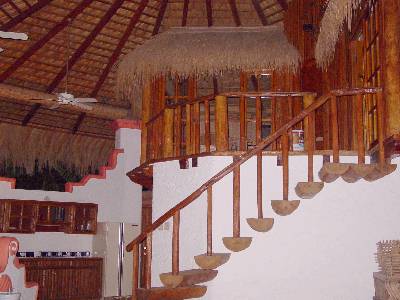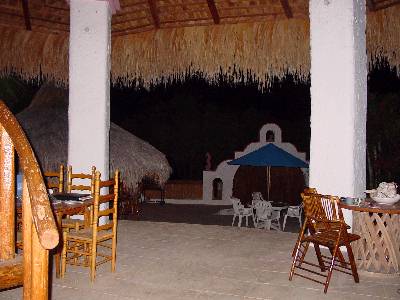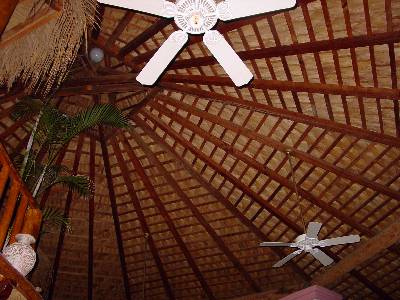I was quite sure I recognized the place..albiet the new remodel. Sorry to hear about Ron's battle with scirosis, but can understand the circumstances. Godspeed to a new liver, amigo..the homeguard wishes you well. During his time in Mulege, he was a welcome addition to the morning coffee crew at Sam's DonnaMoe Pizza shop a bunch of years ago. Whatever happened to his cousin, Ms.... from Virginia? We affectionately called her Olive Oil. Sam was smitten with her.
**Which reminds me..when are we going to get a morning sidewalk coffe club going again? Quite a few people would like a nice outside breakfast or just coffee like the old days. Similar to Ole's in Loreto. Pelicano outside seating would be perfect, Pierce & Val! The idea translates to more $$$$**
I know you will enjoy your new palapa home, Sharksbaja. I always liked the palapa cottages 'tropical' design at the Orchard. Roberto, among other things, has a ..er..flair for the romantic aspects of life. Especially liked the swim-up bar and wine cave at Harry & Shirley Eller's cottage. I think they moved to Kansas.
I have quite a bit of extra buildable land left on Coyote Bay that I should do something with...hmmm.
 Would anyone care for a home in Bahia de Concepcion?
Would anyone care for a home in Bahia de Concepcion? 




 you need to be careful to keep
them patched.
you need to be careful to keep
them patched. h well it only has a 20 year half
life. but you are right about one thang it kills Bugs to.want to by some DDT?
h well it only has a 20 year half
life. but you are right about one thang it kills Bugs to.want to by some DDT?





